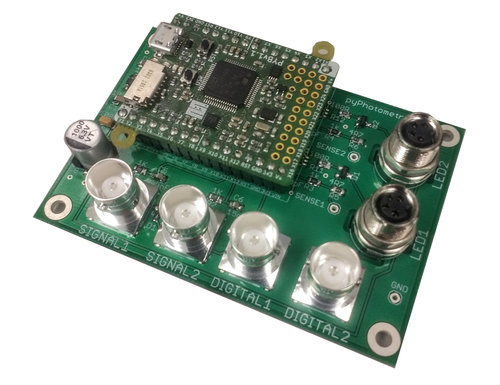Printed circuit boards (PCBs) are the flat, often green boards found inside most electronic devices and in microcontrollers such as Arduino. They provide a way to connect electronic components together and contain etched copper traces that act as miniaturized wires, allowing electrical signals to travel between electrical components attached to the PCB. By replacing bulky wires with etched traces, PCBs enable the creation of smaller and more efficient electronic devices.
PCBs have revolutionized the development of tools for scientific research in several key ways:
Miniaturization:
Before PCBs, scientific instruments relied on bulky point-to-point wiring, making them large and cumbersome. PCBs allowed for miniaturization by replacing wires with etched copper traces. This led to the development of more portable and compact scientific tools, making research in the field and remote locations much easier.
Increased Circuit Complexity:
PCBs enabled the integration of multiple electronic components onto a single board. This allowed for the creation of more complex and sophisticated scientific instruments with advanced features like data acquisition, processing, and control. Imagine the difference between a bulky oscilloscope with individual wires for each function compared to a modern, compact one with a PCB handling everything.
Improved Reliability:
PCBs offer a more reliable way to connect components compared to traditional point-to-point wiring. The etched traces are less prone to errors and breakage, leading to more dependable and consistent performance in scientific instruments. This is crucial for research where accurate and reproducible results are essential.
Mass Production:
PCB technology facilitates the mass production of scientific instruments at a lower cost. This has made new research tools more readily available, fostering wider adoption and accelerating scientific progress.
Here are some examples of recent applications in PCB technology for neuroscience research:
Microscopes: Modern microscopes often integrate complex electronics for image processing and analysis based on circuits linked by PCBs. These new systems have replaced computer workstations that were required for quantitative microscopy only a few years ago. The same kind of technology has been used for miniaturized microscopes, such as the UCLA Miniscope, which
Neurophysiological Recording Systems: PCBs are crucial for currently available recording systems. An example is the hardware from Open Ephys. Their entire recording system is the size of a book, much smaller in comparison to classic recording systems developed in the 1990s. Another example is pyPhotometry, which is a complete control system for fiber photometry that fits onto a PCB and is the size of a typical wallet.
Behavioral Control Systems: The miniaturization and reliability offered by PCBs enable developers to pack more advanced electronics into smaller devices. The whole function of a classic system for behavior control depended on an interface chassis, a computer for monitoring events and controlling outputs, and many, many cables. Now, those function fit onto single PCBs with microcontrollers. An example is pyControl.
Overall, PCBs have been a game-changer for scientific research by enabling the development of smaller, more reliable, and more complex instruments. This has led to advancements in all fields of science, and many of the projects that we have posted about here on OpenBehavior depend on this technology.
We have maintained a list of vendors that supply PCBs for neuroscience applications on our website. We were recently contacted by another vendor for PCBs. The company is HQ NextPCB. We added them to our resources page and encourage you to consider using their services if you need to make use of PCB technology.
HQ NextPCB has created an online viewer for PCB designs. It can display and analyze Gerber files from several common PCB CAD programs. (Gerber files are an instruction blueprint used in the manufacturing of PCBs.) The online tool can export a full analysis report and make suggestions for design changes so that users can avoid costly errors before printing the PCBs.
Please let us know if there are other vendors that should be added to our list of resources!
This post was prompted by HQ NextPCB reaching out to our project and asking for their website to be included in our list of resources. It was also motivated by conversations at our recent workshop on open-source tools, where it became clear that many neuroscientists want to learn more about the technology that underlies the research tools that they use.

